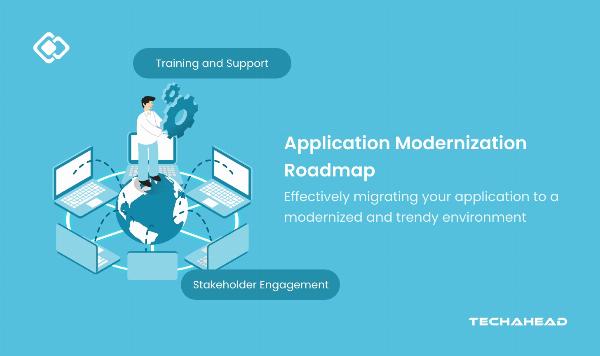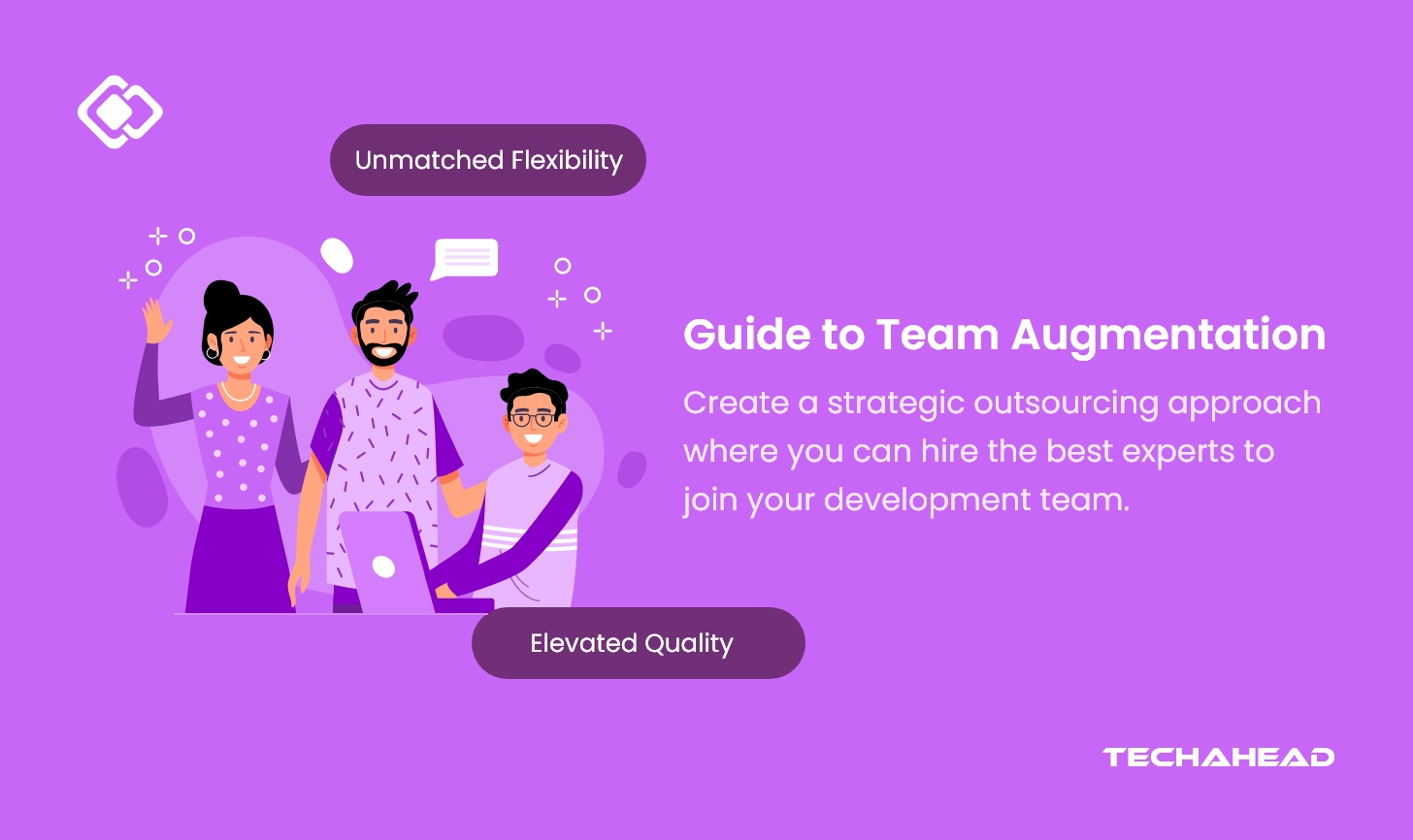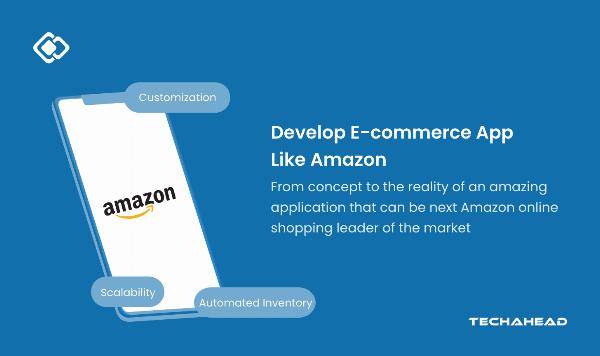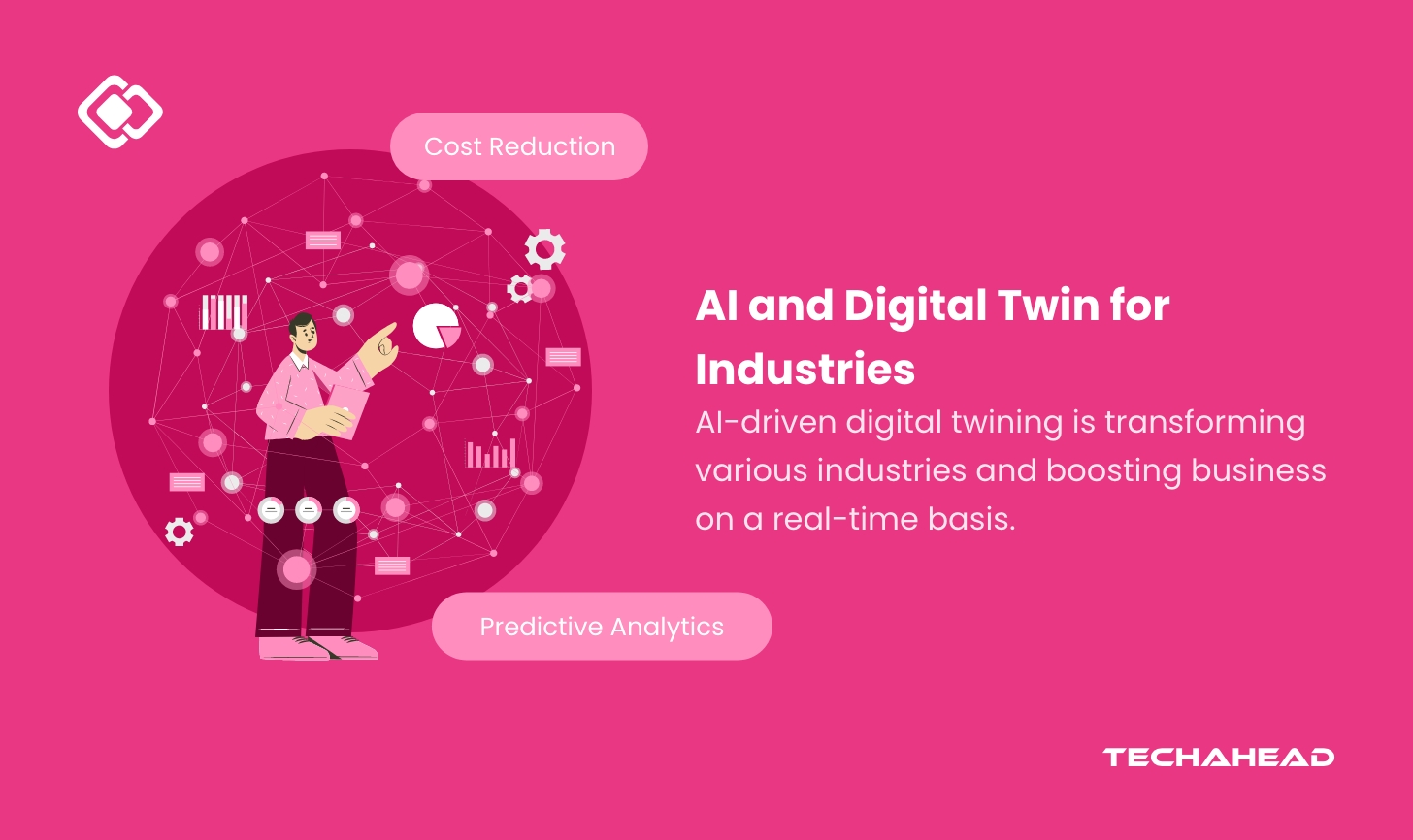 Real Blogger Outreach – Powerful Links. Zero Spam.
Real Blogger Outreach – Powerful Links. Zero Spam.
SaaS Application Development: Everything a Startup Needs to Know
Written by TeachAhead » Updated on: June 17th, 2025

Have you seen how big tech giants in the market are the leaders of SaaS app development? Have you seen how they created a product from the issues people or other businesses are facing and converted it into their business, earning millions and billions of dollars?
Investing in a SaaS application development for your business can be your next huge move.
Don’t believe it?
Just take a quick look at the top 10 biggest SaaS companies in the USA in 2024.
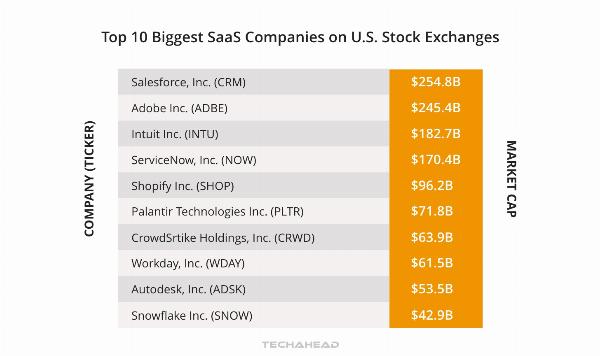
Adobe Inc., Salesforce Inc., and Intuit Inc. are each valued at over $100 billion in market capitalization. Companies like Snowflake, Autodesk, and Workday also have market caps exceeding $35 billion. These SaaS companies saw substantial revenue in 2021.
Investing in SaaS application development is a smart move. The SaaS market is growing at an impressive annual rate of 18%, creating new opportunities for startups looking to develop cloud-based solutions for businesses and consumers.
With the rise of smartphones, SaaS is also expanding into mobile apps, making it a billion-dollar industry. If you're planning to start a SaaS company, you're in luck. This article will provide a guide to developing SaaS applications.
What is a SaaS Application?

SaaS is a Software-as-a-Service based application or software that works on cloud technology. It allows users to connect and use the SaaS application over the internet through a web browser. To put it in a nutshell, Software-as-a-Service (SaaS) is a web or mobile application hosted on a cloud server and allows users to access it from any device and location.
Examples of SaaS applications
Salesforce
Canva
Dropbox
Microsoft Office 365
Google Suite
Slack
AWS (Amazon Web Services)
What is SaaS Application Development?
SaaS development is the process of creating Software-as-a-Service applications for web, or mobile platforms. It involves the design, development, testing, and deployment of the SaaS application on the cloud server.
How is the SaaS application development can be different from Web application?
In principle, all SaaS applications are either desktop software or web applications. However, not all web apps and software are SaaS. To get a clear understanding see the below table
SaaS Application
- Work on a cloud-based server
- Doesn’t need IT infrastructure
- Based on software licensing and delivery model
- The server supports multi-user access
- Generate revenue from the services offered
Web Application
- It is hosted on a web domain server, not on a cloud
- Works from a remote server
- Built on a web user interface
- Can’t handle large multi-user access
- Can’t offer multiple services
Market Overview of SaaS Application
Since SaaS has been running in the market for a very long time. It has been primarily built for web platforms. But, with the rapid disruption of mobile app usage. Mobile devices have become a highly profitable platform for SaaS businesses.
Whether it is B2B or B2C, every person prefers mobile apps for accessing or browsing anything online. Software-as-a-service applications are mostly developed to work as web applications.
However, since businesses and consumers are adopting the mobile-first approach, the rise of mobile Software as a service application is coming into trend. Here are the latest market reports that highlight how big the market of mobile SaaS applications is and how it is growing tremendously.
Size of the small-to-medium business (SMB) mobile Software-as-a-Service (SaaS) market worldwide, from 2016 to 2021(in billion U.S. dollars)
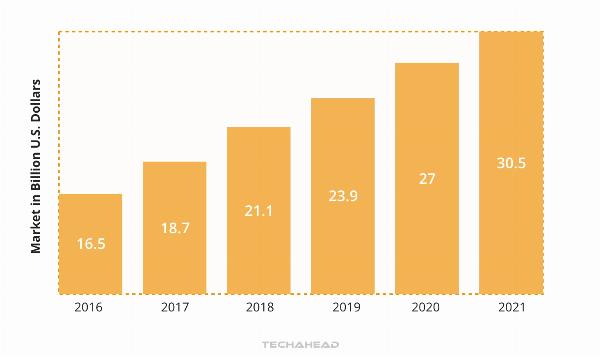
According to Strategy Analytics, the global Mobile SaaS market grew significantly, reaching $37.9 billion in 2021, up from $20.9 billion in 2016, with a compound annual growth rate (CAGR) of 12.7% over that period. The report also highlights that the corporate mobile SaaS sector alone is expected to hit $7.4 billion in 2022.
This growth clearly shows that SaaS (Software as a Service) is no longer limited to web platforms—it’s expanding rapidly into mobile.
So, if you're considering building a SaaS application today, you now have two key platforms to focus on: web and mobile. With mobile apps gaining traction across various industries, experts recommend that now is an ideal time to invest in developing mobile SaaS applications. Doing so could give aspiring SaaS businesses an early edge in this emerging market.
Benefits of SaaS Application Development

SaaS applications offer significant advantages for both business owners and users. As a SaaS startup, you don’t need a large budget or extensive resources to create a complex app. With the help of cloud computing, you can easily develop and deploy your SaaS application on cloud servers.
One of the key benefits of SaaS applications is that they allow users to access online services instantly, from any device, while also cutting down on costs. Here are some of the top reasons why investing in SaaS application development is a smart move.
Quick Deployment
The SaaS model makes deployment fast and efficient. Instead of having to install the software on individual devices, it can be accessed directly through web browsers. This eliminates worries about compatibility or installation problems.
As a result, businesses can quickly start using the latest SaaS software, saving time compared to traditional methods.
Minimal Initial Investment
SaaS comes with very low upfront costs, depending on the SaaS development services you choose. The pay-as-you-go model makes it easier for businesses to form partnerships and only commit to a SaaS plan as their business grows.
This is one of the main reasons why SaaS development is becoming so popular among businesses of all sizes. This approach also helps minimize the risk of major financial losses.
Better Scalability
Developing software-as-a-service (SaaS) applications gives providers more flexibility and scalability. Since SaaS runs on scalable cloud platforms, it's easy to connect with other apps. If your customers need a new feature or service, you can quickly add it by integrating the right APIs.
SaaS apps also help businesses grow by providing better user analytics. You can track user behavior and offer them personalized options. For example, if you have a data storage app like Dropbox, you can start with a free plan and later offer a premium service for purchase.
Cost-efficient Solutions
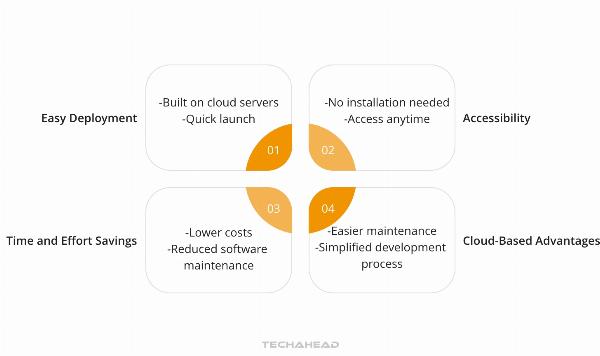
SaaS runs on cloud servers, making it easy to deploy and launch. Providers don’t need to build a large IT infrastructure. They just create the SaaS application and deploy it to the cloud. Users can access the software at any time without needing to install it on their devices. This saves both time and effort and lowers software maintenance costs.
Reduce Operational Cost
SaaS offers a cost-effective solution by reducing the workload and expenses for your IT team. With the cloud-based model, you don’t have to worry about regular maintenance, backups, or updates.
A reliable application development service provider handles all these tasks, including keeping hardware in good shape, preventing downtime, managing software updates, and even training and hiring staff.
This lets your team focus on important business activities, leading to better productivity and growth.
Smooth Integration
People used to worry that older systems might not work well with SaaS and could cause problems for users. However, these concerns have been resolved because SaaS applications have proven to integrate smoothly with existing software.
SaaS includes built-in APIs (Application Programming Interfaces) and integration points that connect different solutions easily. This has made businesses more willing to adopt SaaS, seeing its value in combining various software products seamlessly.
Automatic Updates
Keeping software up-to-date can be tough for IT teams, but Software as a Service (SaaS) makes it easier with automatic updates. This ensures businesses always have the latest version of their software.
With SaaS handling updates on its own, companies can focus more on what they do best. This hands-off process boosts efficiency and frees up time and resources for more important tasks.
Effortless Marketing Through Free Trial
SaaS is known for its smooth marketing strategy, especially by offering free trials. This allows potential users to try out the software before making a decision, helping them appreciate and trust the product.
The "nothing to lose" approach is great for showing the software's value and building customer confidence. Additionally, SaaS providers offer flexible subscription plans that fit different business needs and budgets, making it easier for users to engage with and adopt the software, which benefits both the providers and their clients.
Wide User Accessibility
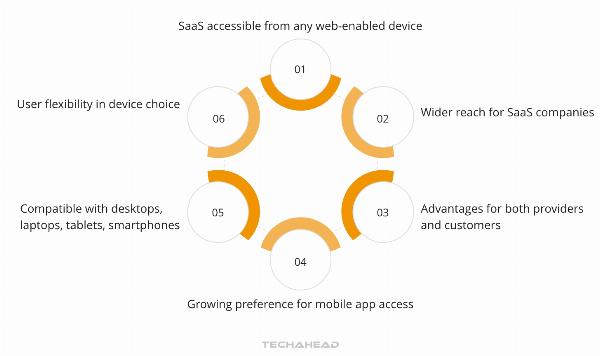
SaaS applications can be accessed from any device with web browsing capabilities, including desktops, laptops, tablets, and smartphones. This is beneficial for both SaaS providers and customers.
Providers can reach users on any device, while customers can use the service from any computer or mobile device. With the growing popularity of mobile apps, many consumers and businesses now prefer using SaaS on their phones. This is why new SaaS startups are investing in custom app development for better mobile access.
Robust Security and Privacy
SaaS applications are excellent when it comes to security and privacy. They use SSL and TLS encryption to keep data safe from unauthorized access and protect user information.
Since SaaS apps run on cloud services, all data is stored on secure cloud servers, which are protected from cyber-attacks. These servers are managed by the company providing the SaaS.
You can trust SaaS providers with your data security and privacy. Big names like AWS, Google, Microsoft, and Oracle offer SaaS with strong cloud infrastructure and IT resources to keep your data safe.
Now that you know the benefits, let’s take a closer look at them.
Who May Benefit From the Use of SaaS App Development?
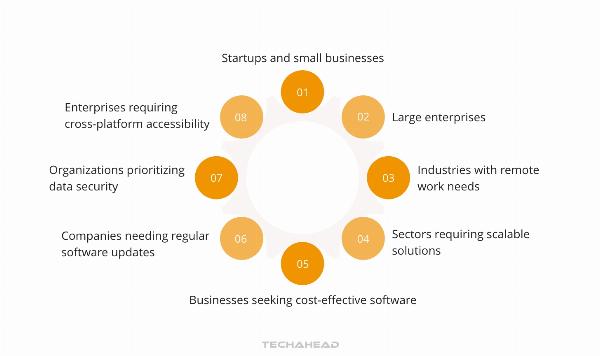
Software as a Service (SaaS) is a flexible solution that serves everyone from individuals to large companies across various industries. Small businesses and start-ups benefit greatly from SaaS because it is affordable and scalable. They can use powerful software without needing to invest heavily in licenses or infrastructure, helping them compete with larger companies.
Individuals and freelancers also gain from SaaS’s flexibility and easy access. They can use tools that boost productivity, manage projects, and support creative work, all from any device or location with an internet connection.
In specialized fields like healthcare, education, finance, and e-commerce, SaaS offers solutions designed for specific needs. For example, healthcare workers use electronic health records (EHR) systems, educators use online learning platforms, and e-commerce businesses use SaaS for inventory and customer management.
Overall, SaaS’s strength lies in its ability to meet diverse needs with a subscription-based model, easy access, and regular updates. This makes it a valuable tool for anyone needing cost-effective, efficient, and scalable software.
SaaS Application Development Process
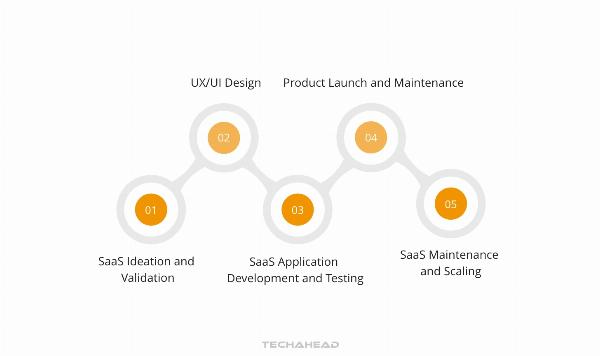
SaaS Ideation and Validation
SaaS app development process is a complex with a broad scope. It’s essential to have a clear vision of the SaaS product you want to create. A SaaS application can offer various services, so start by defining your SaaS concept.
Conduct thorough research into the SaaS market and gather insights from top market statistics sources to understand current demand. Given the large and competitive nature of the SaaS industry, it’s crucial to come up with a unique and effective product idea.
For the best results, consult a professional SaaS development company to assist with conceptualizing and developing your SaaS solution. Once you have your concept, validate it by examining its technical requirements and considering user feedback.
UX/UI Design
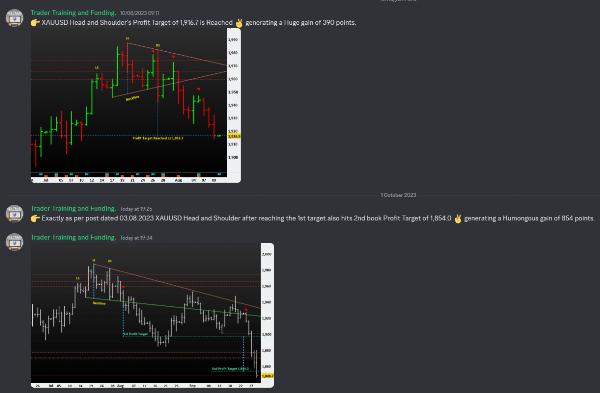
This phase is crucial for you. SaaS applications include various features to deliver services. If users find your SaaS app difficult or uncomfortable to use, they may leave. So, the UI/UX design of SaaS apps is very important.
To design a user-friendly SaaS application, start by creating a wireframe and prototype. This will give you a clear picture of your app. You can also look at popular SaaS apps for UI/UX design ideas.
Development and Testing
This is where the real work begins. At this stage, developers start coding and programming to turn your SaaS product into a live platform. Once the development is complete, they will test the application and perform quality checks.
You need to pay close attention here. If you’re developing a web-based SaaS app, make sure it works well on desktop computers. If you're creating a mobile SaaS app, ensure it performs smoothly on both Android and iOS devices.
Launch and Maintenance
Once your SaaS product is ready, you need to deploy and launch it online. You can use platforms like GitHub, AWS Code Commit, or other cloud services for this process. Launching a SaaS app involves technical steps.
Maintenance and Scaling
SaaS application development doesn’t stop after the initial build. In reality, the work continues afterward. SaaS is dynamic and flexible, so you need to regularly monitor its performance. This means having a solid plan for maintenance and growth.
With the growing competition in the SaaS market, it's important to keep an eye on user behavior and market trends. For example, you might need to add new features, update old versions, and provide consistent customer support.
Since the competition in the SaaS business is continuously growing due to digital transformation, you have to keep a watch on user behavior and market trends. For example, adding new features, updating old versions, providing consistent customer support, etc.
Challenges in SaaS Application Development
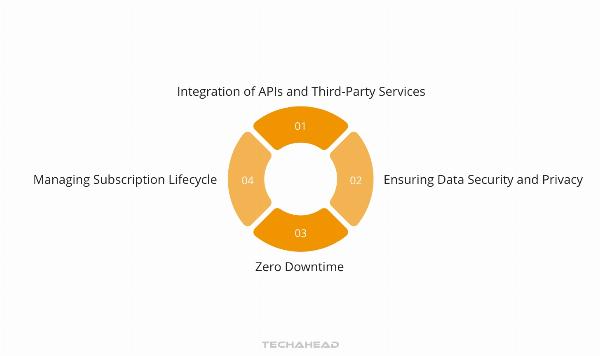
Integration of APIs and Third-Party Services
A common challenge in SaaS development is integrating third-party services, especially for online payments. If your SaaS app needs a payment system, you'll have to integrate services like PayPal, QuickPay, Stripe, Skrill, or Braintree. This can be a complicated process because it involves working with their APIs and following their documentation.
To handle this challenge, you should carefully review the API documentation and understand how APIs work. The best approach is to hire a professional SaaS development company to handle these integrations for you.
Zero Downtime
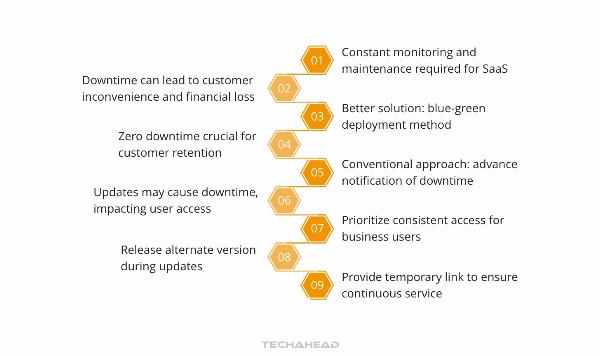
SaaS applications need regular monitoring and maintenance. One challenge you might face is downtime during updates. When your SaaS is being updated or maintained, users might lose access to the services, which can be very inconvenient for them. They rely on your SaaS for their business, so any downtime can lead to financial losses and might make them look for alternatives.
To avoid this problem, you should aim for zero downtime during updates. Instead of just notifying users about downtime in advance, use a blue-green deployment strategy. This involves running two versions of your app: the old version (Blue) and the new version (Green). During maintenance, you can switch users to the older version temporarily so they can continue using your service without interruption.
Ensuring Data Security and Privacy
SaaS applications handle a lot of sensitive data about your business and customers. A security breach could lead to major data loss and privacy issues, so it’s crucial to have strong data protection measures.
You also need to make sure your SaaS app complies with various data protection regulations and laws, like GDPR and HIPAA. If your app doesn’t meet these legal standards, you could face legal consequences.
To avoid these problems, choose a SaaS development service that understands GDPR and HIPAA requirements. Make sure their developers use SSL and TLS encryption to secure communication between users and servers.
Managing Subscription Lifecycle
SaaS incorporates many features and services to offer. Your customers might need to change their plans while using your services. For example,
- Use trial version
- Subscribe
- Unsubscribe
- Cancel
- Upgrade
And to serve your customer’s change requests, you need to constantly work on managing the subscription lifecycle. Plus, you have to manage the data of your subscriber list. Managing all these things could be a challenge for you.
How to overcome this challenge: There are two solutions to this problem. Either you can create your subscription system or integrate external APIs.
How Much Does it Cost to Develop a SaaS Application?
On average, developing a SaaS application costs between $50,000 and $300,000 or more. The exact cost depends on factors like the complexity of the app, API integrations, and the hourly rate of developers.
At TechAhead, we offer pricing based on either hourly rates or project costs, depending on the needs of a full-stack SaaS product. We’ve provided cost-effective solutions for startups, typically ranging from $50,000 to $200,000.
The final cost of developing a SaaS application mainly depends on the type of app you want to create. Below, we’ve listed the costs for developing popular types of SaaS applications.
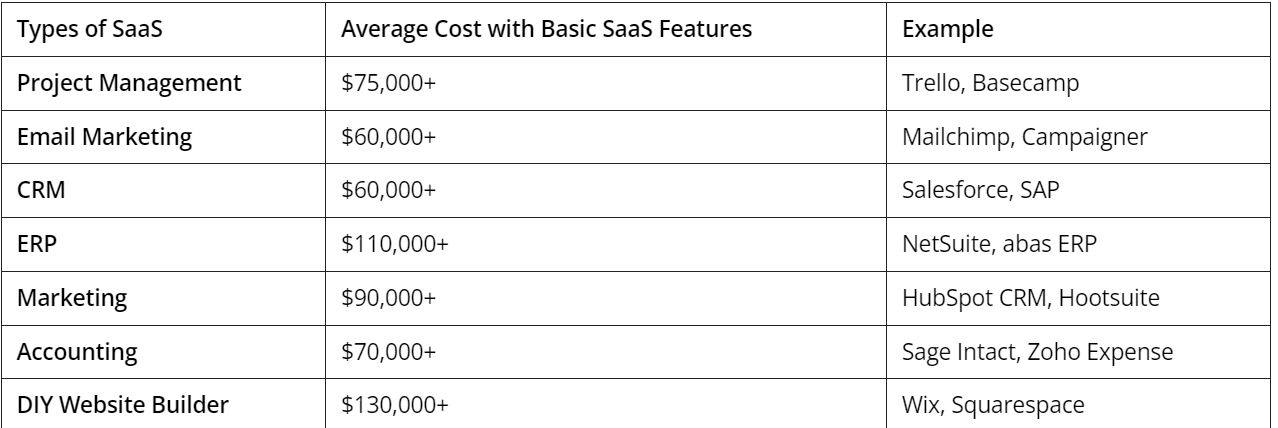 Conclusion
Conclusion
SaaS is like creating a virtual company. It allows you to connect with millions and billions of users around the globe. This means, your SaaS product has a large size of target audience and business scope. From big to small, every level of SaaS company has achieved great success by providing innovative and problem-solving software-as-a-service to their customers.
Hence, investing in SaaS application development is an assured success. But, to ensure your SaaS product also achieves the same success and generates big revenue, you should try to develop your SaaS product under an expert SaaS application development company.
How TechAhead Can Help You Build Your SaaS Product?
TechAhead is a top-rated software development company with a team of skilled professionals and the latest technology to create any type of SaaS application for your business.
We offer top-notch SaaS development services for both web and mobile platforms. Our experienced developers and designers are experts in building web and mobile SaaS applications.
If you have any questions about your SaaS project, just schedule a call to talk with our experts.
Just Schedule a Call and Speak with Our Experts
Source URL: https://www.techaheadcorp.com/blog/saas-application-development-everything-a-startup-needs-to-know/
Note: IndiBlogHub features both user-submitted and editorial content. We do not verify third-party contributions. Read our Disclaimer and Privacy Policyfor details.
Copyright © 2019-2025 IndiBlogHub.com. All rights reserved. Hosted on DigitalOcean for fast, reliable performance.



